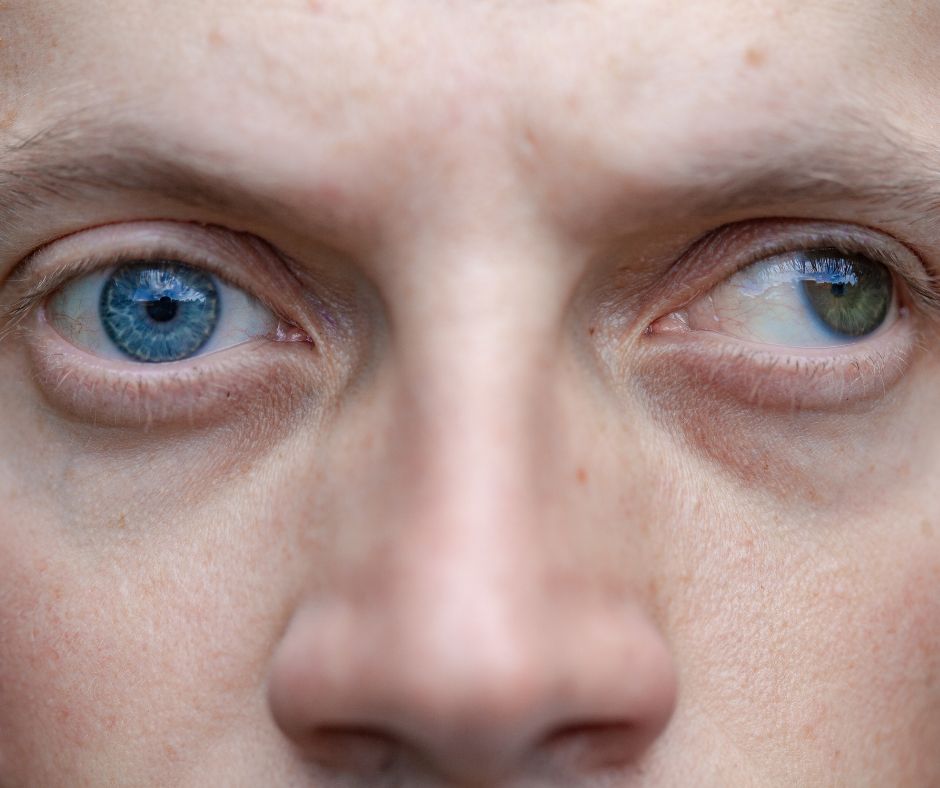
10 Apr What Is Strabismus And How Is It Treated?
Have you ever noticed someone’s eyes not aligning properly? This condition is called strabismus, commonly known as crossed eyes or wandering eyes. It affects both children and adults and can impact vision, depth perception, and even self-confidence. But what exactly causes it, and how is it treated? In this blog, we’ll dive into the different types of strabismus, its causes, and the options available for treatment.
What Is Strabismus?
Strabismus is a condition that leads to misalignment of the eyes. In this rare form of strabismus, one eye turns in a different direction compared to the other eye. This misalignment can be constant or come and go, and can affect one or both eyes. It can have a significant impact on one’s vision and depth perception, and if left untreated, can cause long-term outcomes such as amblyopia.
How Common Is Strabismus?
Strabismus is very common, affecting up to 2-4% of children in Canada. Doctors generally diagnose the condition in early childhood. Adults can get strabismus, as it’s commonly caused by underlying health conditions or trauma. This understanding of the importance of early diagnosis has led to the development of effective treatment. This is particularly critical in children, whose brain and visual system are under active development.
Early Signs Of Strabismus
The most noticeable sign of strabismus is one eye turning inward, outward, upward, or downward while the other stays straight. Some children may experience double vision, tilt their head, or squint to focus—often linked to accommodative esotropia. More subtle signs include avoiding activities requiring depth perception, like catching a ball.
Strabismus usually appears by age three, affecting about 4% of young children. Mild misalignment is normal in infants up to three months, but if it persists beyond four months, it’s a concern. Early detection is crucial, so if your child shows signs, schedule an eye exam promptly.
Causes Of Strabismus
Strabismus, or eye misalignment, stems from issues with eye muscles, nerves, or brain control. Weak or paralyzed eye muscles can prevent proper coordination, while nerve damage disrupts signals needed for alignment. Brain injuries, strokes, or uncorrected farsightedness can also contribute to it.
Risk factors include premature birth, low birth weight, diabetes, or eye trauma. Genetics also play a significant role, so children with a family history are more likely to develop this eye misalignment. Neurological conditions and muscle weakness further impact eye coordination, making early detection crucial for treatment.
Living With Strabismus
Strabismus can significantly impact vision, daily activities, and confidence. Tasks like reading, driving, and navigating stairs can become challenging due to issues like double vision and poor depth perception. Some people experience constant eye strain and migraines, making daily life even more difficult. Managing symptoms with frequent breaks, anti-fatigue glasses, and treatments like eye exercises, medications, or surgery can help, though ongoing care is often needed.
Beyond the physical challenges, strabismus can take a toll on mental and social well-being. The visible nature of the condition may lead to self-consciousness, affecting social interactions and career opportunities. Children with strabismus may face teasing, impacting their self-esteem, while adults may struggle with social discomfort. With the right treatments and support, individuals with this condition can navigate life with confidence.
Treatments
Strabismus can affect people of all ages, impacting both vision and confidence. Treatment aims to restore proper eye alignment and coordination, improving both function and appearance. The approach varies based on severity, patient age, and whether the condition is chronic or newly developed.
Non-surgical treatments are often the first step, especially for mild cases. Corrective lenses can help if strabismus is linked to refractive errors like farsightedness. Eye patches may strengthen weaker eyes, while targeted exercises improve coordination. In some cases, medications like Botox can temporarily relax overactive eye muscles to aid alignment.
For moderate to severe cases, or when non-surgical methods fail, surgery may be required. This outpatient procedure adjusts eye muscles to improve alignment, though follow-up treatments like glasses may still be needed. Emerging therapies, including vision therapy and digital eye-tracking, offer new hope by retraining the brain to enhance eye coordination, paving the way for future advancements in strabismus care.
Conclusion
Strabismus can have profound impacts on one’s vision and everyday life, but with appropriate treatment and compassion it can be an easily understood condition. Early diagnosis and treatment are key to preventing permanent visual impairment and other complications. Whether it’s managing with glasses, pursuing therapy or a surgical intervention, there are approaches available that can help restore alignment and reduce bothersome symptoms.
If you or your child experiences any of these symptoms or have concerns regarding strabismus, don’t hesitate to book an appointment at Dr. D’Orio Eyecare today. Visit https://drdorioeyecare.com/book-appointment/ or call us at 416-656-2020 for our Toronto location, or 416-661-5555 for our North York location.



